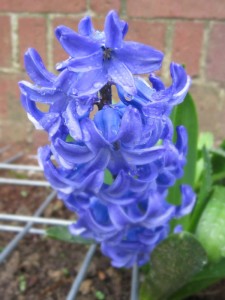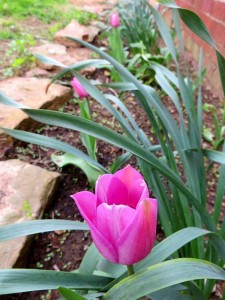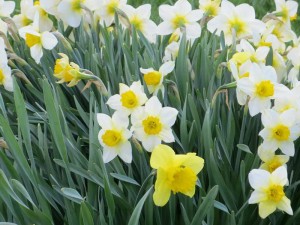Say it with flowers
Last summer a friend invited me to a birthday BBQ for his girl. I had not met his girlfriend, but I wanted to bring her a gift. I had just read The Language of Flowers by Vanessa Diffenbaugh. The book introduced me to floriography, and inspired me to bring a bouquet of daisies and coreopsis from my garden to represent youth and cheer on her special day.
Floriography is the term for communicating with flower meaning and symbolism. The language of flowers reached peak popularity in Victorian times. Entire gardens were designed to showcase specific flowers or messages. Women of the era marked their stationary, hats, dishes and other possessions with significant flowers.
Today’s gardeners are not as fluent in the language of flowers. But floriography is an intriguing study for those interested in how a flower’s characteristics, history and traditional uses give it symbolic meaning.
10 flowers and meanings for the modern gardener
Chrysanthemum, commonly called mum, is a fall-blooming garden favorite. Gardeners like their dark, rich autumn colors of maroon, umber and gold. Mums denote truth.
Lilies are a diverse flower with a wide range of meanings depending on variety. Lily of the Valley represent purity. Tiger Lilies signify pride.
Iris is given as a sign of friendship. Bearded Iris are rhizomes whose rootstock expands in shallow ground. Plant Iris in early fall to enjoy their bearded blooms in early spring.
Hyacinth have unique blossoms and a robust sweet smell. Blue Hyacinths mean constancy. White represent beauty. Purple ask for forgiveness.
Roses carry different meanings based on their color. Red Roses stand for love, and white roses indicate innocence. The stage of blossom development when a rose is given influences its meaning. A budding rose means new love, and a rose in full bloom means enduring love.
Daisies bloom early in the day, symbolizing youth. They are generous perennials that return every year and spread easily once established.
Coreopsis are members of the sunflower family. Yellow, orange and pink blossoms are a cheerful sight that literally mean cheerfulness.
Tulips are a spring favorite. They stand for perfect love. There are over 3000 varieties in every shade imaginable. A well-planned tulip garden that includes varieties of early, mid and late season bloomers offers constant color from March to May.
Gladiolus suggest sincerity. Pollinators love their tower of blossoms. One season I counted 7 hummingbirds buzzing around a single red glad!
Daffodils send a message of new beginnings. When I see yellow and white wild daffodils light up the forest floor, I know spring has arrived.















